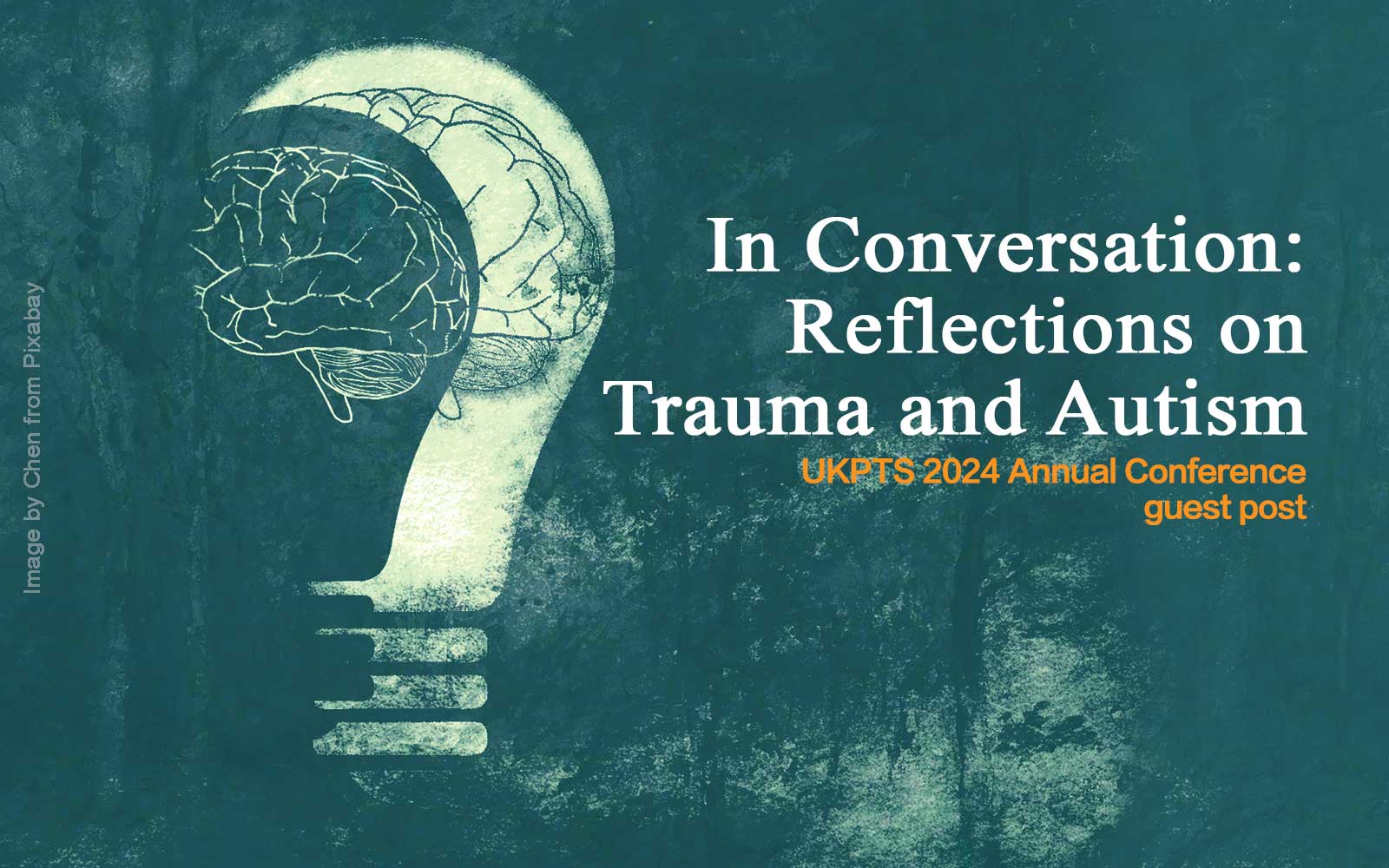A Many-Faceted Thing
A Many-Faceted Thing
The conceptualisation and understanding of PTSD has changed considerably since its introduction in 1980. Is it time we started paying more attention to its variations, and start thinking about different types of PTSD?

More than four decades have passed since the introduction of post-traumatic stress disorder (PTSD) into the third edition of the Diagnostic and Statistical Manual of Mental Disorders (DSM-III). In that time, PTSD has shifted from being classed as an anxiety disorder to a traumatic and stressor-related disorder, the definition of index traumatic experiences has broadened, and new symptoms have been included.1
With each revision has come much conversation and some controversy. Indeed, the construct itself has been criticised by some as resulting from political and social horse trading2 that risks over-pathologising human experience and questions the primacy and necessity of index traumas.3 And of course, population prevalence rates are subsequently altered depending on the definitions employed.4
This diagnosis fails to capture how convoluted the psychiatric problems of these patients are, and how complex their treatment is.
– van der Kolk (2000)
On one hand, the expansion of applicable traumatic stressors could be seen as democratising the psychopathology of trauma.5 This continued the trend first introduced in 1980 of bringing the psychological consequences of multiple types of traumatic experience – such as combat exposure, domestic violence, and single-instance traumas such as accidents – under one homogenous definition. In short, it makes sense that a range of traumatic experiences can and do lead to lasting traumatic responses that may negatively impact an individual.
On the other, PTSD as a singular, unitary concept is also potentially problematic. For example, under the current nosology, if an individual is exposed to repeated or extreme aversive details of a traumatic event (rather than experiencing the event directly themselves), such exposure is not a valid stressor if this is experience through electronic media such as television or pictures. That is, unless this such exposure is work-related. Although such quirks may have little applied value beyond perhaps the most pedantic of medical insurance hair-splitting, it does raise important questions which traumas are ‘in’ and which are ‘out’, as well as how a single diagnosis can capture the rich range of human experiences and responses.
Of course, not all post-traumatic stress responses reside under the PTSD umbrella. DSM-5 differentiates PTSD in children of six years or under, as well as a dissociative sub-type of PTSD6 featuring symptoms of depersonalisation or derealisation and emotional detachment.
ICD-11 – which arguably takes a more public health approach to diagnostic nosology than DSM-5 – includes Complex PTSD (CPTSD). Resulting from repeated, prolonged or severe trauma, CPTD is considered as distinct from PTSD although both disorders share the common symptoms of a sense of threat, avoidance, and re-experiencing. CPTSD additionally features disturbances in self-organisation which includes interpersonal disturbances, negative self-concept and affect dysregulation.
In addition, responses to specific traumas such as prolonged grief disorder7 and postpartum PTSD8 all point to the importance of considering the individuality of traumatic experience and the variations in PTSD presentations.
Galatzer-Levy & Bryant calculated that under the to DSM-IV definition, there were 79,794 combinations of symptoms that could result in a diagnosis of PTSD; in DSM-5 this number increased to 636,120.9 When the frequent co-morbid conditions with PTSD are considered, the combinations are (consciously, and somewhat mischievously) presented as astronomical… at over one quintillion.10 In this respect, the heterogeneity in index traumatic experiences, symptoms and patient presentations are of direct relevance to clinicians and those working with the after effects of trauma.
A great deal of work is necessary to identify and understand common outcomes of disparate, potentially traumatic, and common stressful life events.
– Galatzer-Levy & Bryant (2013)
Interpersonal traumas such as a bullying, sexual trauma, and domestic violence have been shown to result in higher levels of post-traumatic stress symptoms, compared to non-interpersonal traumas.11 More specifically, intrusion and hyperarousal symptoms appear more prominent for those who have experienced vehicle accidents and community trauma, whilst for people who have experienced sudden loss or avoidance and negative changes in cognitions and mood are more common.12
A better under the presenting profile of groups or event individuals may also help in the tailoring of treatment that can best impact the symptoms experienced at an individual patient level.
Research techniques have a role to play in understanding the heterogeneity of patient presentation.13 Latent profile analysis (LPA) and latent class analysis (LCA) can sort a patient group into different categories, such as distinguishing groups based on treatment responses or symptomatic profile. For example, one study of comorbidity with PTSD found the presence of three distinct PTSD groups: those comorbid with mood and anxiety disorders; those comorbid with mood, anxiety, and substance dependence; and low or no comorbid PTSD group. Interestingly from a clinical standpoint, those who fell into the two co-morbid groups had higher rates of suicidal ideation, more severe PTSD symptoms, and a greater likelihood of intimate partner abuse.14 Therefore, such insight can be used to further investigate factors at play and interventions adapted as a result.
Network theory has direct implications for how to understand diagnosis and treatment, and suggests a clear agenda for future research in psychiatry and associated disciplines.
– Borsboom (2017)
A more radical approach involves the use of network analysis, which reconceptualises what a disorder may be.15 Network analysis examines the links between different symptoms to create a network map. In a network approach, symptoms influence other symptoms through the strength and number of their connections to each other, with some symptoms positioned as more central or influential in the network. As a result, rather than disorders such as PTSD being a result of a common set of causes, they are instead conceptualised as resulting from the strength and pattern of connections between symptoms themselves. Whether or not one subscribes to the network approach to psychopathology, the technique allows for some exciting and nuanced insights.
Studies of military veterans have shown greater connectivity between symptoms in those meeting threshold for PTSD compared to those considered sub-threshold, with those reporting high levels of combat exposure showing an association between intrusive thoughts and irritability.16 Similarly, both ‘recurrent thoughts’ and ‘a sense of detachment’ were found to be the most central symptoms in another group of veterans receiving treatment for PTSD.17
Findings such as these can help ensure that interventions effectively address the most central symptoms in particular groups, or even individuals. Indeed, as network maps expand when co-morbidities are included, there is a possibility of creating psychological interventions that hone in on central symptoms that act as links between different disorders to most efficiently and effectively weaken or break the entire symptom network apart.
What is today identified as PTSD has featured in art, literature and scientific inquiry into the human condition for thousands of years.18 Over time, the names and social constructs in which post-traumatic disorders reside may have changed,19 but the concept that traumatic experiences can result in lasting distress remains universal. As our modern conceptualisation of PTSD enters its middle age, a more nuanced and differential understanding of different symptom profiles may help ensure that therapeutic interventions can be better designed to fit not just the precipitating trauma, but the individual in distress themselves.
References
- Zoellner, L. A., Bedard-Gilligan, M. A., Jun, J. J., Marks, L. H. & Garcia, N. M. The Evolving Construct of Posttraumatic Stress Disorder (PTSD): DSM-5 Criteria Changes and Legal Implications. Psychol. Inj. Law 6, 277–289 (2013).
- Summerfield, D. The invention of post-traumatic stress disorder and the social usefulness of a psychiatric category. BMJ 322, 95–98 (2001).
- Brewin, C. R., Lanius, R. A., Novac, A., Schnyder, U. & Galea, S. Reformulating PTSD for DSM-V : Life after Criterion A. J. Trauma. Stress 22, 366–373 (2009).
- North, C. S., Surís, A. M., Smith, R. P. & King, R. V. The evolution of PTSD criteria across editions of DSM. Ann. Clin. Psychiatry Off. J. Am. Acad. Clin. Psychiatr. 28, 197–208 (2016).
- Turnbull, G. J. A review of post-traumatic stress disorder. Part I: Historical development and classification. Injury 29, 87–91 (1998).
- van Huijstee, J. & Vermetten, E. The Dissociative Subtype of Post-traumatic Stress Disorder: Research Update on Clinical and Neurobiological Features. Curr. Top. Behav. Neurosci. 38, 229–248 (2018).
- Prigerson, H. G., Kakarala, S., Gang, J. & Maciejewski, P. K. History and Status of Prolonged Grief Disorder as a Psychiatric Diagnosis. Annu. Rev. Clin. Psychol. 17, 109–126 (2021).
- Grekin, R. & O’Hara, M. W. Prevalence and risk factors of postpartum posttraumatic stress disorder: A meta-analysis. Clin. Psychol. Rev. 34, 389–401 (2014).
- Galatzer-Levy, I. R. & Bryant, R. A. 636,120 Ways to Have Posttraumatic Stress Disorder. Perspect. Psychol. Sci. 8, 651–662 (2013).
- Young, G., Lareau, C. & Pierre, B. One Quintillion Ways to Have PTSD Comorbidity: Recommendations for the Disordered DSM-5. Psychol. Inj. Law 7, 61–74 (2014).
- Birkeland, M. S., Skar, A. S. & Jensen, T. K. Understanding the relationships between trauma type and individual posttraumatic stress symptoms: a cross‐sectional study of a clinical sample of children and adolescents. J. Child Psychol. Psychiatry 63, 1496–1504 (2022).
- Kelley, L. P., Weathers, F. W., McDevitt-Murphy, M. E., Eakin, D. E. & Flood, A. M. A comparison of PTSD symptom patterns in three types of civilian trauma: PTSD Symptom Patterns. J. Trauma. Stress 22, 227–235 (2009).
- Hendrikx, L. J. & Murphy, D. Using statistical techniques to understand the unique needs of military personnel experiencing mental health difficulties: moving away from assuming patient homogeneity to understanding heterogeneity. BMJ Mil. Health e002253 (2023) doi:10.1136/military-2022-002253.
- Galatzer-Levy, I. R., Nickerson, A., Litz, B. T. & Marmar, C. R. Patterns of Lifetime PTSD Comorbidity: a Latent Class Analysis. Depress. Anxiety 30, 489–496 (2013).
- Borsboom, D. A network theory of mental disorders. World Psychiatry 16, 5–13 (2017).
- Phillips, R. D., Wilson, S. M., Sun, D., VA Mid-Atlantic MIRECC Workgroup & Morey, R. Posttraumatic Stress Disorder Symptom Network Analysis in U.S. Military Veterans: Examining the Impact of Combat Exposure. Front. Psychiatry 9, 608 (2018).
- Ross, J., Murphy, D. & Armour, C. A network analysis of DSM-5 posttraumatic stress disorder and functional impairment in UK treatment-seeking veterans. J. Anxiety Disord. 57, 7–15 (2018).
- Sheth, H., Gandhi, Z. & Vankar, G. Anxiety disorders in ancient Indian literature. Indian J. Psychiatry 52, 289 (2010).
- Jones, E. et al. Post-combat syndromes from the Boer war to the Gulf war: a cluster analysis of their nature and attribution. BMJ 324, 321–321 (2002).



